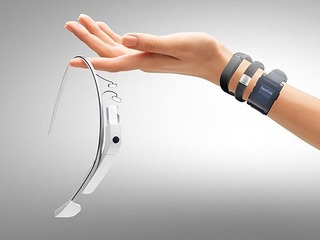Maven Clinic launches program for members who want to get pregnant without IVF
The company also expanded access to 12 different provider types for male fertility care
Read more...
2015 seems to have been a really good year for the consumer electronics space. With wearables coming into their own, and investments into companies at a higher rate than they have been in years.
But all is not well, apparently, and there's a big factor that could be holding the space back: security. Or, more accurately, a lack of security.
Nearly half of 28,000 consumers, from 28 different countries, said that they were so concerned about security and privacy that it was affecting their decision to buy an Internet of Things device, according to a poll conducted by global professional services company Accenture
IoT in this case includes not only smart devices, such as a Nest, but also wearables, like smartwatches and fitness monitors.
Of those asked, the largest number, 24 percent, said that they had decided to not buy an IoT device due to security concerns, while 18 percent said that they stopped using theirs because of the same issue. That is 42 percent whose behavior was adversely affected.
Another 37 percent said that they would continue to use the devices, but would "be more cautious," and 21 percent said that they aren't concerned about security.
All of this has effect the sale of IoT devices, with only 13 percent of those surveyed saying they were going to buy a smartwatch this year, and only 9 percent said they would buy fitness monitors, wearable health devices, smart thermostats and connected home-surveillance cameras.
“Despite all its promise, the Internet of Things market has revealed itself to be a double-edged sword,” Sami Luukkonen, global managing director for Accenture’s Electronics and High Tech group, said in a statement.
“The market opportunity is enormous, but security and ease-of-use concerns are hindering its near- and long-term potential. To ignite this market, consumer technology companies should consider getting serious about ecosystems, sharing data, and creating integrated services across multiple companies, such as building a connected home through an integrated home security camera, thermostat, and door lock."
This is happening at a bad time for the consumer electronics space, as demand for traditional consumer technology devices has tapered off due to over saturation. That includes smartphones, TVs and tablets.
Contrary predictions
Some of this data goes against expectations for the space, which are predicting a big increase in sales, thanks to wearables.
A report earlier this year forecasted that the number of wearables shipped would more than double in 2015 to 45.7 million units, up from 19.6 million in 2014.
By 2019, total shipment volumes are forecast to reach 126.1 million units. That means it will have a five-year compound annual growth rate of 45.1%.
Those predictions turned out to be correct. In all, 39.5 million adults in the United States used at least one wearable, including a smartwatch or a fitness tracker, in 2015, according to eMarketer. That was an increase of 57.7% over the 25. 1 million who used them in 2014.
And those numbers are expected to explode after that. In 2016, there are expected to be 63.7 million wearable users, or nearly 30% of Internet users and 25 percent of all adults in the United States. Though the growth is expected to taper off, by 2018, it will be 36.5 percent, which will include 81.7 million users. By 2019, almost two in five internet users will use wearables, and almost 40 percent of Internet users.
That means that over a third of all U.S. adults will either wear accessories or clothing at least once per month that have Internet-connected electronics and exchange data with a manufacturer.
A recent report from Gartner, 6.4 billion connected things will be in use worldwide in 2016, up 30 percent from 4.9 billion in 2015, and will reach 20.8 billion by 2020. In 2016, 5.5 million new things will get connected every day.
The firm also estimates that IoT will support total services spending of $235 billion in 2016, up 22 percent from 2015.
Investors certainly see a lot of opportunity, as there was $1.3 billion invested in consumer electronics companies in 2014, more than double the $680 million that was invested in 2014. Not only that, but it was the first time in at least five years that more than $1 billion was invested.
The space also saw deals shoot up over the last couple of years, more than doubling in 2014, and then seeing a 57 percent increase in 2015, to 268 deals, in 2015. Here's something really astounding: there were been more consumer electronics deals in 2015 than in the four years between 2010 and 2013 combined, 257 to 268.
(Image source: betanews.com)
The company also expanded access to 12 different provider types for male fertility care
Read more...Ezra's AI cancer screening platform will be available in 150 RAYUS locations
Read more...Foggy uses the Taptic Engine in Apple Watch to provide vibrotactile stimulation for gait freezing
Read more...